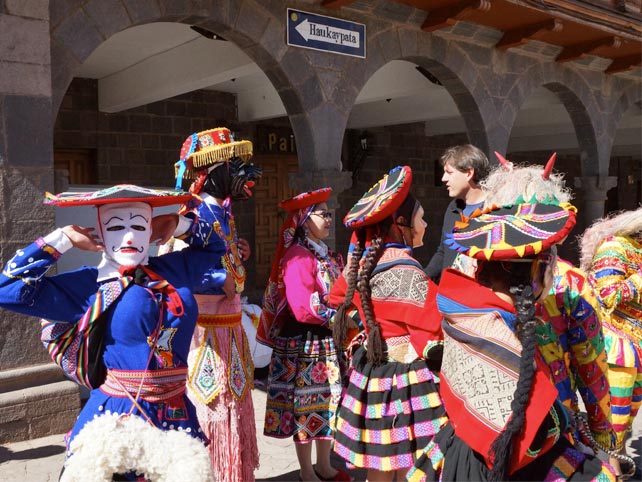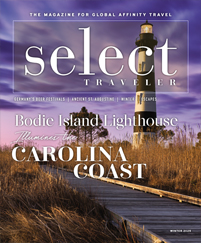
Photos by Mac Lacy
“Today, research shows that almost half the planet would like to see Machu Picchu and to know the Incan culture that made this place possible.”
“Every day, traverlers leave their homes across teh world to learn about the world’s most historic cultural destinations. Certainly Peru fits that description.”
“We are looking for ways to minimize the impact of tourism on the sustainability of our territory and our humanity.”
These remarks, excerpted from the comments of a succession of Peruvian speakers to our group last May, yield a concise statement of fact about the enormity of this country’s worldwide appeal. They also summarize a call — if not a plea — for sustainable tourism practices, not only for Machu Picchu, but also perhaps for all the world’s most treasured sites.
And they did not fall on deaf ears. As members of a Tourism Cares delegation, many of us, no doubt, were excited about seeing Machu Picchu, one of the world’s iconic archaeological sites. But we were also excited to go there in support of Peru’s efforts to minimize the impact of travel on that site through sustainable tourism practices.
I was traveling with a group of international tour operators, destinations, hotels and trade associations that support Tourism Cares, the industry organization that works to preserve travel sites for future generations.
For me, it was the perfect introduction to this South American country. We’d visit Machu Picchu, meet with local tourism officials, spend a day restoring a city marketplace in Cusco and enjoy a couple of nights in the country’s revered Sacred Valley. Best of all, we’d do it in only six days, including travel.
Going International
“Go Peru,” as this effort was called, was Tourism Cares’ first international project, and CEO Bruce Beckham didn’t undertake it lightly.
“We had to have the right project and the right partner for this,” he told me. “Peru made sense on a number of fronts. Dr. Don Hawkins of George Washington University has spent a lot of time there, and Robin Tauck, a primary supporter of an international project, also thought Peru was a logical choice. When Carlos Alberto Arrarte, president of Lima Tours, attended our project in Mystic, Connecticut, he wanted to replicate that effort in Peru.
“I made a trip to Cusco to see what type of project we could do there,” said Beckham. “The restoration of their marketplace, Mercado Central de San Pedro, was perfect. It was badly in need of restoration, and it is a site that travelers to Cusco should plan to see.”
After arriving in Lima, we flew the next morning to Cusco, which is, like Machu Picchu, a UNESCO World Heritage Site. When the Spaniards arrived there in the 16th century, the Incan empire was vast, covering much of western South America from what is now Columbia in the north to the Maule River region in central Chile. It extended from the Pacific Ocean to the Amazonian rain forests in the east.
Today, the city of 300,000 residents remains a cultural center in southeastern Peru and a jumping-off point for many visitors to Machu Picchu and the Sacred Valley. It sits in the Andes Mountain range at 11,000 feet and enjoys a wonderfully temperate climate. Much of its history comes from the clash of cultures that took place after the Spanish arrived in Peru.
Our group walked through the city center and into a downtown park, where the Cusco Convention Center stands. We were accompanied by costumed dancers in traditional Incan dress as we made our way to the tourism symposium.
We weren’t far from the San Pedro Market, where we would gather two days later for our work project. This bustling market has potential as a stop for visitors who want to enjoy its authentic Andean atmosphere, as locals negotiate with vendors for everything from fruits to clothing.
Most of the discussion at our symposium centered around Peru’s wealth of archaeological sites and how to broaden its tourism appeal while preserving its cultural heritage. That heritage is an amalgam of Incan, Spanish and Catholic influences.
“Cusco was like Jerusalem for the Incas,” said one of our local guides. “In that respect, Catholicism for this region was a disaster.” He pointed to a church. “That church was built above an Incan temple. In fact, most of our 17 churches were built over Incan temples,” he said.
To the Sacred Valley
After our symposium, we set out for the Urabamba Valley, also known as the Sacred Valley. Climbing out of Cusco, we saw some of the living conditions for the lower class in Peru. Homes were erected against hillsides with little or no electricity or running water, most of them crowded along the winding highway that has been carved out of the mountainsides surrounding the city.
“These are shantytowns,” said Jorge Olivera, one of our guides with Coltur. “These hillsides have been terraced for centuries for crops. We’re very near the equator, so crops will grow up to 14,000 feet. Common crops here are wheat, potatoes, oats and fava beans.”
A couple of hours later, we arrived in Peru’s Urabamba Valley. We wound our way down a twisting highway into a sweeping valley that sits in the shadow of the Andes.
Normally, I consider hotels to be mere background in any trip, but our accommodations there were not. Our group stayed in two hotels in Urabamba that drew unanimous acclaim. Mine, the Tambo del Inka, was as nice as any I have stayed in. Its architecture was primarily stone and timber, and its interior was spacious and comfortable, adorned by native tapestries, urns and art. Its staff was young, gracious and savvy enough to handle guests from any culture.
The Andean peaks climbing upward from the valley are terraced to remarkable heights for crops. Jorge told us that Peruvian farmers still traverse to the tops of these hillsides with donkeys in the morning and return to their homes at night.
The next day, we made our way to Ollantaytambo, where visitors catch the train to Machu Picchu. This village has quite an Incan heritage remaining in the way of walls and temples that grace the mountains surrounding it. Many Incan warriors died there defending it against the Spaniards, and the site’s name, which means “a warrior’s resting place,” was given in honor of their actions.









